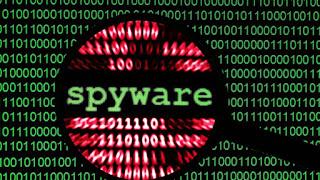Understanding Spyware
Spyware is a form of malicious software designed to infiltrate your device and secretly monitor your activities without your permission. Unlike other types of malware that aim to cause harm or steal specific files, spyware focuses on quietly gathering information, often for purposes like financial fraud, identity theft, or corporate spying. Knowing how spyware operates and how to defend against it is essential for protecting your privacy and security.
How Spyware Enters Devices
Pretending to Be Legitimate Software: Spyware often disguises itself as legitimate programs, such as free apps, tools, or browser extensions. Users may unknowingly download spyware when they install what seems to be a useful application.
Bundling with Other Software: Spyware is frequently packaged with other software, especially free or shareware programs. When users install the main software, the spyware is installed alongside it, often without their awareness.
Exploiting Security Flaws: Spyware can exploit vulnerabilities in software, operating systems, or web browsers to install itself silently. This can happen through drive-by downloads, where simply visiting a compromised website results in an automatic spyware download.
Phishing and Social Engineering Tactics: Spyware can also be delivered through phishing emails or social engineering attacks, tricking users into clicking malicious links or downloading attachments that install the spyware.
Activities Performed by Spyware
Tracking User Behavior: Once installed, spyware begins to monitor user behavior, including browsing history, search queries, and online interactions. It tracks the websites you visit, the content you engage with, and your overall internet usage.
Gathering Sensitive Data: Spyware is often used to collect sensitive information like passwords, credit card numbers, and personal data. Keyloggers, a type of spyware, record every keystroke, capturing passwords, messages, and other confidential information.
Monitoring Location: Some spyware can track a user’s physical location by accessing GPS data or monitoring IP addresses. This information can be exploited for malicious purposes, such as stalking or targeting the user with specific attacks.
Capturing Screenshots and Recording Media: Advanced spyware might take screenshots, record video or audio from your webcam or microphone, or even capture your conversations and surroundings.
Transmitting Data to Attackers: The data collected by spyware is typically sent to the attacker or a third party, who may use it for identity theft, financial fraud, or selling the data to advertisers or other malicious entities.
Effects of Spyware
Spyware can have serious consequences for both individuals and organizations. It can lead to identity theft, financial losses, and the compromise of personal or corporate data. Additionally, spyware can slow down your system, cause frequent crashes, or make your device unstable due to the resources it consumes.
Preventing and Eliminating Spyware
Install Trusted Security Software: Using reputable antivirus and anti-spyware software is crucial. These tools can detect and eliminate spyware before it causes damage.
Be Careful with Downloads: Only download software from reliable sources. Avoid downloading free or unknown programs from questionable websites, as they may contain spyware.
Keep Software Updated: Regularly updating your operating system, browsers, and applications helps close security gaps that spyware might exploit.
Use Pop-up Blockers: Pop-up ads can sometimes carry spyware. Using a pop-up blocker can help prevent accidental downloads.
Stay Aware of Phishing Attempts: Understanding phishing techniques and avoiding suspicious emails, links, and attachments can help you avoid spyware infections.
Check App Permissions: When installing apps, especially on mobile devices, review the permissions they request. If an app asks for more access than necessary, it might be spyware.

